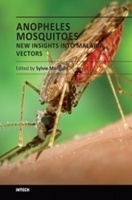Ruminant Physiology Digestion, Metabolism Vol III by Vinra Publication
Book Summary:
Encyclopaedia of Ruminant Physiology: Digestion, Metabolism and Impact of Nutrition on Gene Expression, Immunology and Stress covers study of ruminant physiology, digestion, metabolism and impact of nutrition on gene expression, immunology and stress. Ruminants are mammals that are able to acquire nutrients from plant-based food by fermenting it in a specialized stomach prior to digestion, principally through bacterial actions.
The process typically requires the fermented ingesta (known as cud) to be regurgitated and chewed again. The process of rechewing the cud to further break down plant matter and stimulate digestion is called rumination. The volume “Ruminant Physiology: Digestion, Metabolism” is divided into nine chapters.
Audience of the Book :
This book Useful for Physiology and Science Students.
Table of Content:
1. Interaction Between Peroxisomes and Mitochondria in Fatty Acid Metabolism
2. Functional Role of Ppars in Ruminants: Potential Targets for Fine-Tuning Metabolism During Growth and Lactation
3. Ruminal Methane Emission by Dairy Cattle in Southeast Brazil
4. Minerals Profile of Forages for Grazing Ruminants in Pakistan
5. Phenotypic Characterization and Strategies for Genetic Improvement of Wad Goats Under Backyard Systems
6. Effect of Phlorizin on Metabolic Abnormalities in Spontaneously Diabetic Torii (Sdt) Rats
7. Supplementing Fibroblast Growth Factor 2 During Bovine Oocyte in Vitro Maturation Promotes Subsequent Embryonic Development
8. Do Policy Based Adoptions Increase the Care a Pet Receives? An Exploration of a Shift to Conversation Based Adoptions at One Shelter
9. Immuno-Contraceptive Potential of Sperm Specific Ldhc4 and Spam-1 (Ph-20) Sub Units in Dog
Citations, Index


















